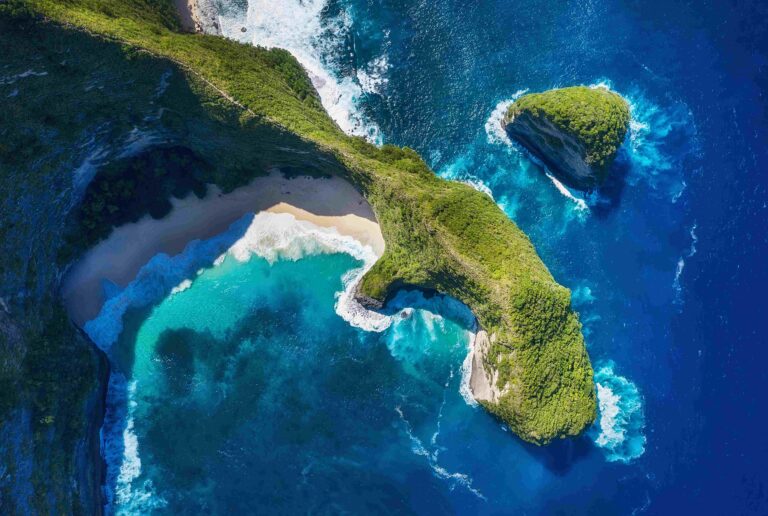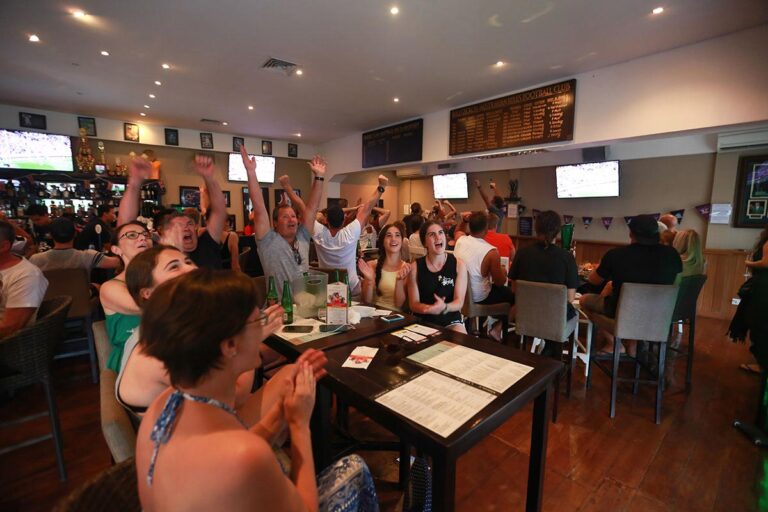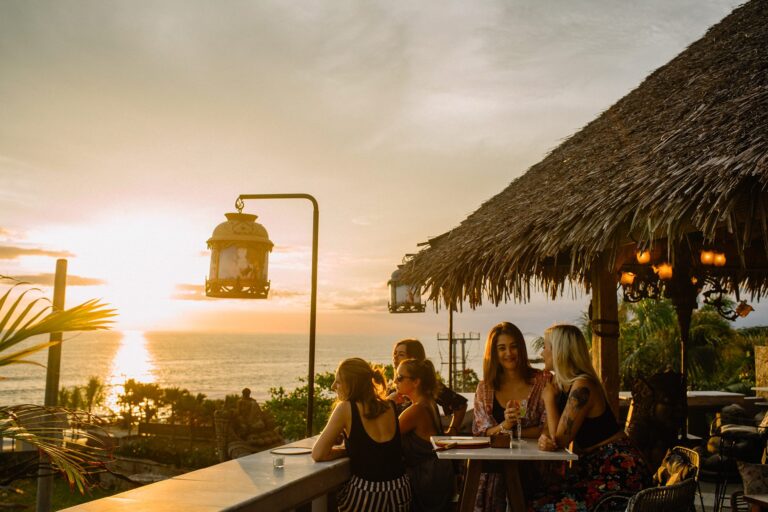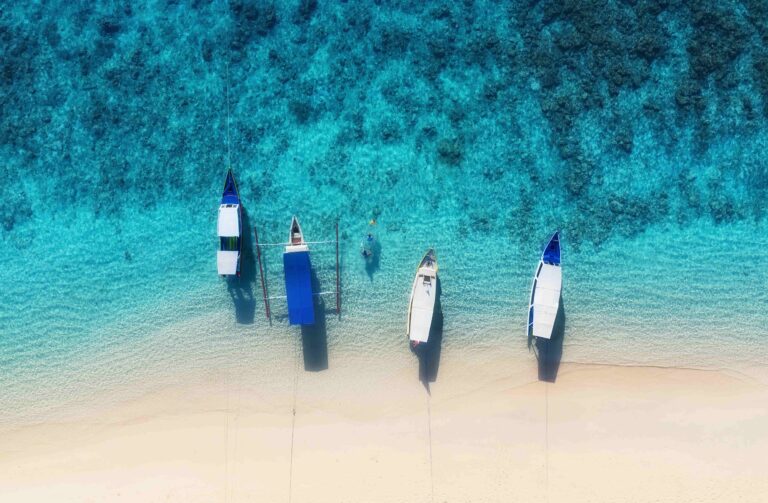The Pura Kehen Temple is one of the oldest and most beautiful temples in Bali. Its unique construction and place in Balinese history make it a great place to visit on your Bali holiday.
Our guide will introduce you to everything you need to know to get the most out of a visit to Pura Kehen Temple.
Where Is Pura Kehen Temple?
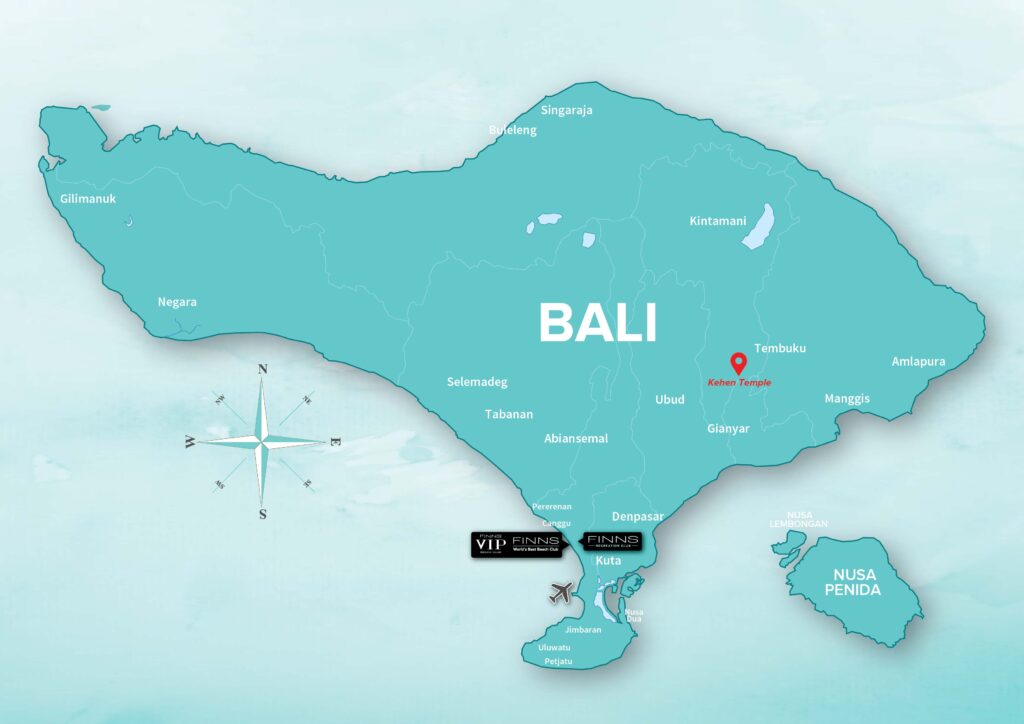
Pura Kehen is in Cempaga Village in the Bangli District of the Bangli Kingdom (Bangli Regency). It’s a couple of kilometres north of the village centre and sits at the base of a tree-covered hill (Bangli Hill).
Address: Jl. Sriwijaya No.8, Cempaga, Kec. Bangli, Kabupaten Bangli, Bali 80613, Indonesia
How To Get To Pura Kehen Temple

If you’re coming from Denpasar or Ubud, you could probably get to the temple using a Grab or Gojek, however, you’d want to ensure a return trip with the same driver.
As with many Bali temples, this one’s a little out of the way and there won’t be an abundance of drivers around this ancient temple once you’ve finished exploring the temple grounds.
Otherwise, we’d recommend that you either join an organize tour or hire a car and driver for the day.
We don’t recommend riding a scooter in Bali particularly in more remote parts of East Bali like this one as the roads aren’t in good repair and the standards of driving here aren’t great.
We think it’s better to spend a little more money on transport and a little less money on hospital bills, particularly when it’s hard to be road-legal on a scooter and you’re not insured if you’re not road-legal.
When’s The Best Time To Visit Pura Kehen Temple
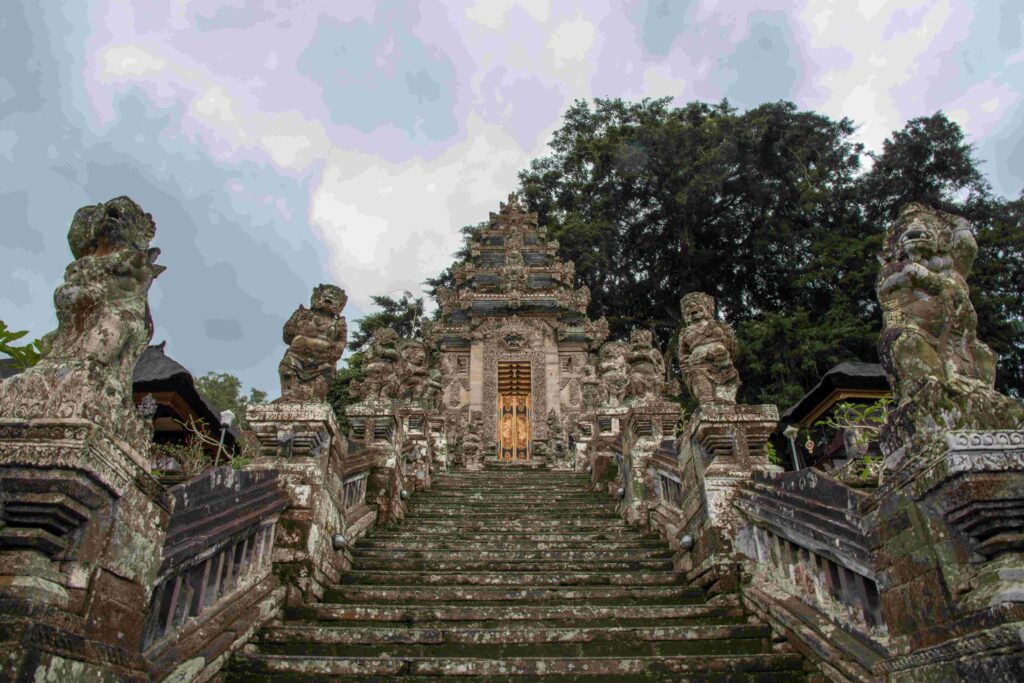
There is no bad time of year to visit Pura Kehen, even in the rainy season, there are about 8 hours a day of sunshine on the island on average.
The Kehen Temple is also inland, where it’s cooler than in the beach resorts and thus, it’s easier to wander around the main temple and enjoy the intricate stone carvings around the inner courtyard without getting too hot and sticky.
What’s The Entrance Fee For Pura Kehen Temple?
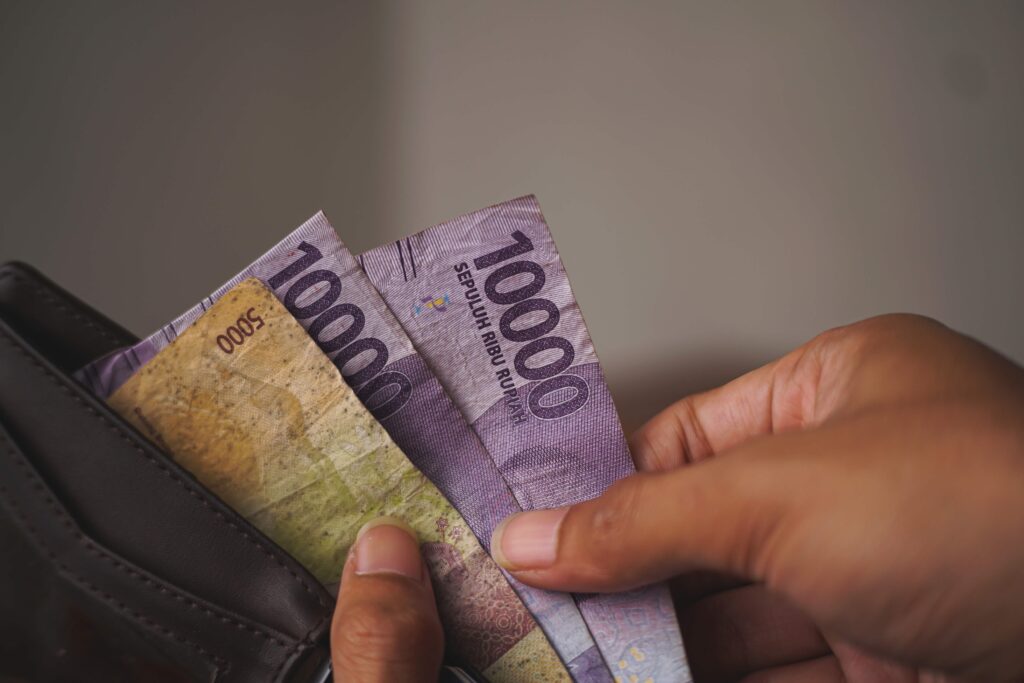
As we go to press, the entrance fee for adults is just 15,000 IDR (that’s $1 USD to $1.50 AUD) to enter Pura Kehen and children are admitted for free.
That’s incredible value for money and one of the most reasonable temple entrance fees in Bali.
About The History Of Pura Kehen Temple And The Bangli Kingdom
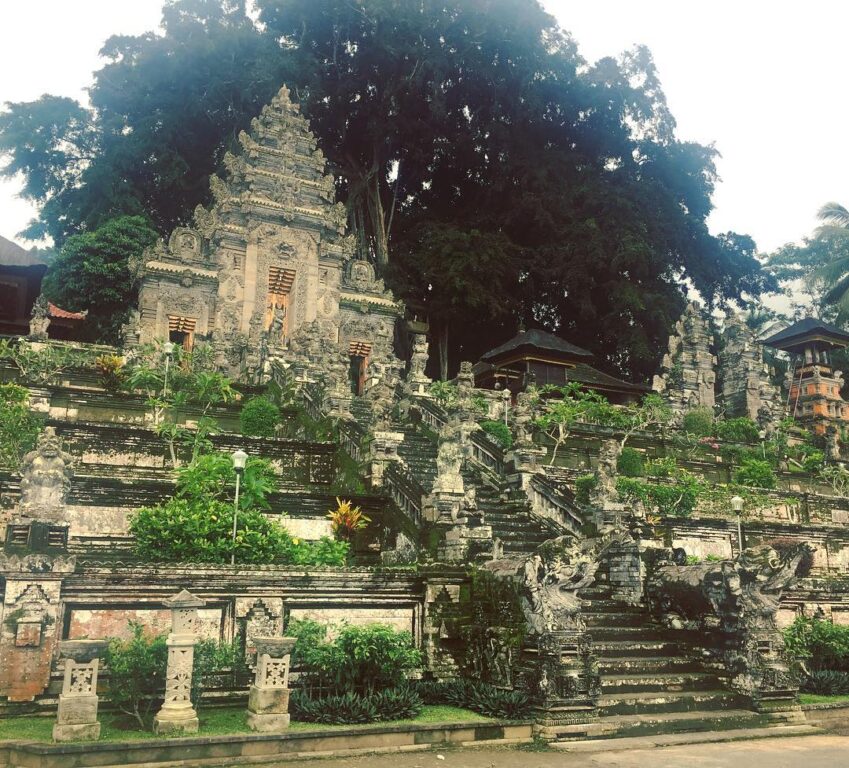
Pura Kehen (the word “Pura” means temple in Bali) was originally the main temple of the Bangli Kingdom, which is today known as the Bangli Regency.
The name “Bangli” is a compound word that comes from “Bang” and “Giri” and they translate as “red mountain” or, perhaps, “red forest”.
The original Bangli Regency was a spin-off from the Majapahit Dynasty (Indonesia’s longest-serving dynasty before colonization) and would have been founded as an extension of the Gelgel Kingdom also in Bali.
We know that this temple has been operating for over 1,000 years as various copper inscriptions mentioned its existence, including one that was dated in the 9th century AD.
It appears to have been dedicated to Hyang Api when it was first opened, that is the Hindu god of fire. However, by the 11th century, the dedication had changed to Hyang Kehen, the name “Kehen” means “flame” which is a subtle but significant change. The temple would have been known as Pura Hyang Kehen at this point in time.
Pura Kehen as the main temple of the kingdom would have been where officials came to swear oaths of allegiance and fealty to the kinds that they served.
Legend has it that anyone who betrayed their oath would find that their family line would become cursed. People took oath ceremonies seriously in those days.
The oaths would have been sworn in the inner sanctum of Pura Kehen on an altar bearing the image of Agni, the fire god.
However, the temple probably only began to be called Pura Kehen in the 13th century and onward.
What To Expect At Pura Kehen Temple
Pura Kehen is a lovely place and when you enter the Kehen Temple’s grounds you will come through the “Candi Kurung”. This is an unusual style of gate for Bali and leading up to it is a staircase covered in stone statues.
The temple is aligned on a North-South basis and there are three areas on the grounds. The first is the outer sanctum (jaba pisan), then the middle sanctum (jaba tengah) and finally the central courtyard and inner sanctum (jero).
The gateway to the central courtyard is a candi bentar, a more standard gateway, that you have seen in other temples in Bali.
There are also several shrines here as befits a state temple or official temple and they are considered sacred by the local community.
Finally, in the central courtyard, you will find a meru tower (with 11 tiers) and the padmasana lotus shrine dedicated to the Hindu Trimurtu. There are also some smaller shrines dedicated to the spirits of the mountains in the Bangli Kingdom.
There are also some fascinating porcelain plates in this sanctuary placed there by royal officials at some point and they have images of rural England on them!
The Banyan Tree
In many Balinese temples, you will find a Banyan Tree in the Bale Kul Kul, however at Kehen Temple, the Banyan Tree is absolutely huge and has a large section of the grounds dedicated to it.
It is in the outer courtyard of the temple grounds and is accessible to everyone.
They say that if the Banyan Tree Trunk is ever damaged or toppled that the area will suffer a huge natural disaster and thus, the local people work hard to protect it. This tree is currently believed to be over 400 years old.
Where To Stay Near Pura Kehen Temple
There are no big brand-name resorts in the countryside here, but there are some excellent eco-resorts and guesthouses that include:
De Umah Bail Eco Tradi Home – a gorgeous boutique resort with a fabulous swimming pool area and private eco-home villas to rent.
Kost Soka Asri – a pleasant guest house with clean rooms and incredible views over the countryside. The owner is very kind and welcoming.
Pondok Sidewas – a very simple and pleasant guesthouse in the countryside, there’s no online booking service, however, so you will need to turn up and see if you can find a room.
D’Sari Undisan Villa – a fabulous guesthouse with a nice garden and an outdoor kitchen where you can cook meals and enjoy some al fresco dining.
De Klumpu Bali Eco Tradi Stay – a very nice resort containing eco-friendly bungalows and interesting water features among the rice fields.
Where To Eat Near Pura Kehen Temple
If you’re looking for an authentic Balinese dining experience you can certainly find it around this temple:
Dijumah Cafe Bali – they only take cash at this village restaurant which is a hidden gem found at the end of a cute alleyway. Their coffee and juices are superb and the lunches are great value for money.
Babi Guling Pande Bangli – if you want an authentic Balinese meal, then this take on suckling pig, then try this warung. The portions are much bigger than usual and are super cheap.
Bamboo Forest at Penglipuran Village – this gorgeous eatery in a nearby village is very much worth visiting for its Instagram-worthy construction, the food is a touch basic but tasty enough.
UUMA Eatery & Playground – this is a great place to go with young kids as they have a nice playground and swimming pool access for diners.
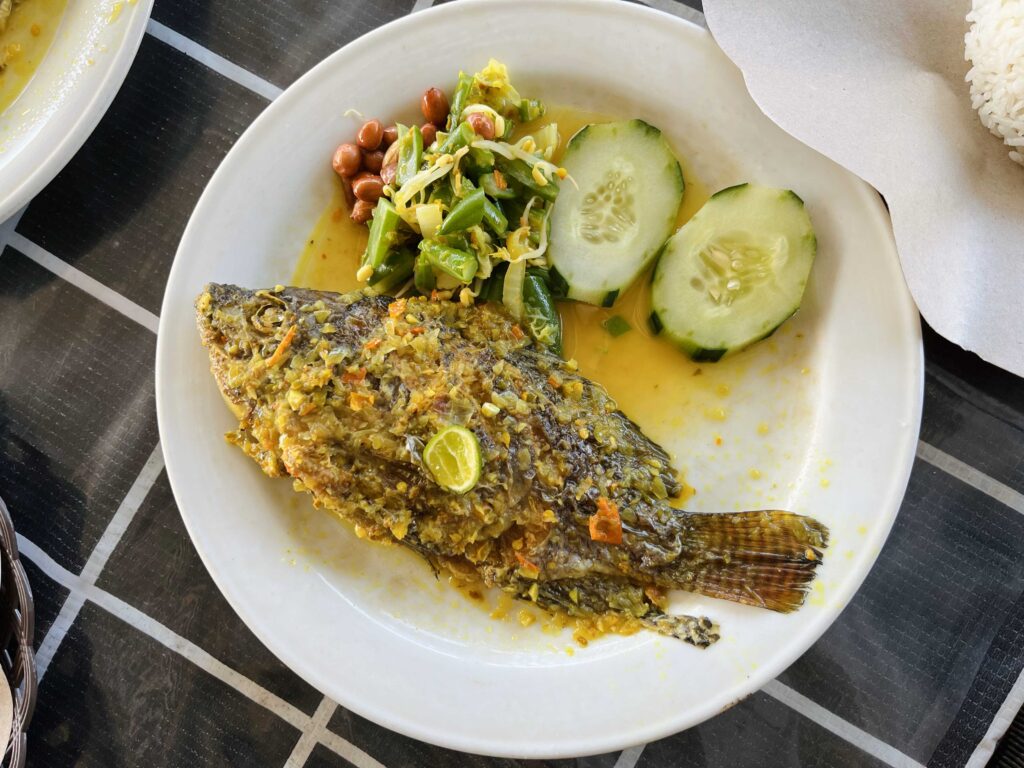
Mujair Nyat-Nyat Pak Bagong – this ultra-basic eatery does some amazing nyat-nyat (a spicy fish dish) and it’s going to be hard to find somewhere cheaper to eat anywhere in Bali.
Other Things To Do Near Pura Kehen Temple
There are some other interesting places in the area too:

Penglipuran Village – this traditional Balinese village is famed throughout the land for its handicrafts and beautiful scenery. There is some decent homestay accommodation on offer here too.
Goa Raja Waterfall – a busy and popular waterfall with a pool that you can swim in, changing rooms, and a lovely walk from the car park to the falls.
Yeh Bulan Waterfall – a very easy-to-access waterfall that’s a little off the beaten path and free of the usual social media influencers monopolizing the view.
Tukad Cepung Waterfall – is one of the most famous waterfalls in the area and the light streaming through openings in the cave by the falls makes for very dramatic photographs.
Grudugun Waterfall – this waterfall is very challenging to get to but it’s worth it, and the local mangosteen vendor offers the freshest fruit in Bali!
FAQs
What Is The Holiest Temple In Bali?
The holiest temple in Bali is the Besakih Temple. It is considered to be the mother temple of all nine kingdoms of Bali and is one of the oldest temples on the island.
Which Is The Most Famous Temple In Bali?
We think it’s either the Besakih Temple, which is Bali’s most important temple, or the Pura Lempuyang which has gained a certain amount of notoriety due to being the most photogenic of Bali’s tourist attractions thanks to a trick local photographers play with a mirror.
What Is The Meaning Of Pura In Bali?
Pura is the Balinese word for temple.
What Is The 1,000 Year Old Temple In Bali?
There are many old temples in Bali, the Pura Kehen Temple is over 1,000 years old. But, perhaps, the oldest and most significant temple is the Besakih Temple.
Final Thoughts On Pura Kehen Temple In Bali
Pura Kehen temple is a cultural institution on the island of Bali that has survived for over 1,000 years. It’s one of the most attractive temple sites here too.
We’d recommend visiting if you want to get away from the crowds and explore a quiet off-the-beaten path part of Bali.
Other sights:
Goa Gajah Temple: Your Ultimate Guide To The Elephant Cave Temple Complex In Bali
Pura Lempuyang Temple, Bali: Your Guide To The Gates Of Heaven
Saraswati Temple: The Ultimate Guide To The Ubud Water Palace




